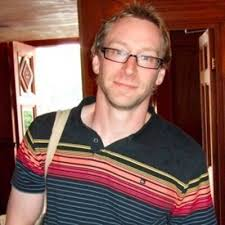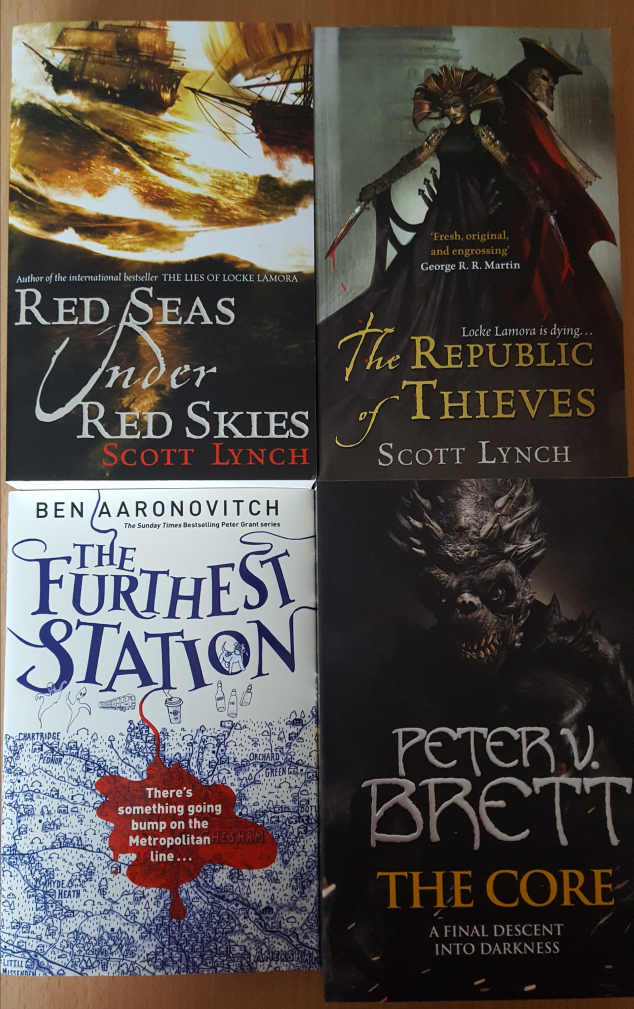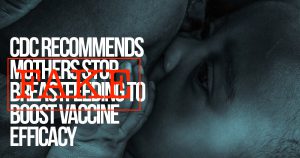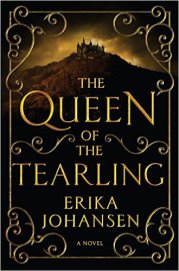
You Can Run by Steve Mosby
Synopsis:
When a stolen car crashes into a house on a suburban street, the police are shocked to discover a woman being held captive inside the building. As the remains of many more victims are found in the house, it seems that the Red River Killer – who has been abducting women for twenty years and taunting the police with letters about his crimes – has finally been identified.
As the hunt for the killer intensifies, DI Will Turner finds the investigation edging dangerously close to uncovering his own demons. He must be the one to catch the killer while keeping his own past buried. The clock is ticking, and there are lives at stake…
My review:
I have long since been a fan of Steve Mosby’s books. They are always extremely dark and gripping and I am not quite sure, if I have completely forgiven him yet, for the seriously scary opening to ‘The Nightmare Place’! This novel begins in the aftermath of the ‘Red River Killer’ as he attempts to evade capture. With the killer clearly identified from the outset, this is not whodunit, but more of a why did they do it? And how did they remain uncaught for so long? With plot twists and gruesome crimes this novel is everything that I have come to love, about the authors writing style and I’d even go as far to say that it is, his best yet!
The prologue opens 25 years previously in Detective Will Turners childhood, with best friend Rob. Throughout the novel the character of Will Turner is unravelled. However, he always remains quite vague, which for me only made me want to know more and kept me guessing. I much prefer this writing style of a protagonist, to one where we are told every aspect of the character within the first 100 pages etc.
When a car thief loses control of the vehicle during a police chase and ploughs into the garage on a residential street. A bound and gagged woman is discovered amongst the rubble. Rushed to hospital for emergency treatment the police are left to wonder, what sort of man keeps a woman as a slave in a garage? Whilst the motives seem obvious, the detectives have evidence to gather and now, a manhunt on their hands. Detective Will Turner is paired with partner/lover DI Emma Beck are tasked with the case and their focus is solely on the suspect John Blythe’s house. Searching the house and its contents makes for grim reading that, the reader can easily visualise. But it is when they get to the cellar and the contents of the 4 barrels are discovered, we learn the true depravity of John Blythe………
With John Blythe now clearly identified as the ‘Red River Killer’, we learn of all his past victims, their stories and the letters, the killer used to taunt the victim’s families. This is extremely dark and well thought out, in-fact I would go as far to say that the ‘Red River Killer’ reads like a true crime story. Every factor of the killer’s psychology is discussed and it makes for interesting reading. Why do some men become violent, depraved and sadistic killers? The point of view shifts from three different views the police, the killer and someone else who has involved themselves in the case. Are the police searching for a suspect or a pair of suspects? Will the victim survive the evil acts inflicted on her body? What is the link to Will Turners past?
One thing is for certain the plot and in-depth characterisation, makes for spine-chilling reading. Hugely recommend not only this book but all of the authors crime fiction books. 5*
#ChattingSerialKillersWithSteveMosby Q&A:
Q) For the readers, can you give a summary of yourself and your latest release?
A) Hi there, and thank you very much for having me on your site! For the readers, I’m 40 years old and live in Leeds. I’ve wanted to write stories for as long as I can remember, and my first book was published in 2003. Since then, I’ve published ten novels in total, although it was really with my third book, The 50/50 Killer, that I properly settled into what I’ve written ever since: very dark standalone psychological thrillers.
My most recent release, You Can Run, is about the hunt for the Red River Killer, a man who has been abducting women and taunting the police with notes for twenty years. At the beginning of the book, he’s identified when the police stumble upon his house by accident. The problem is: he isn’t there. So the majority of the book is a cat-and-mouse manhunt between the killer and the main character, Detective Will Turner. Turner has a personal connection to the case, and over the course of the book he begins to realise there’s more going on than it seems at first.
Q) I have long since, been a fan of your writing and have read all of your books to date. Which is your favourite? And which was your favourite to write?
A) Thank you very much. I like all of them for one reason or another, but I do have a few favourites: The 50/50 Killer, Black Flowers, Dark Room and I Know Who Did It are probably the ones I’m most happy with. I should obviously say You Can Run as well! But the thing is, it often takes me a couple of years before I can take an honest look at a book and work out how I feel about it.
In terms of favourites for writing, there are good and bad moments with every book: days when things click and feel right, and (far more frequently) days of self-doubt and abject despair. The more you write, the harder it gets, because you understand more and you’re testing your limits. So I probably had an easier time writing the earlier books, but I’d say I enjoyed I Know Who Did It more than most. I’d written a book based on that concept, with many of the same characters, a couple of years earlier, but I just couldn’t get it to work, so it got shelved and I basically lost a year in publishing terms. But then, a book or so afterwards, I figured out what I could do with it. So when it came to writing I Know Who Did It, I already had several scenes and characters in the bank, and I understood what I was doing better than I usually do when I go into a novel. Plus, it was a real relief not to have entirely wasted that year.
Q) In my review, I comment that the novel is similar to that of a true crime story. Every aspect has been meticulously covered and it has a very real feel to it. What is your research process? And does it involve reading true crime stories?
A) I do read a fair bit of true crime, but that’s mainly out of interest rather than for research. What you say is really flattering, actually, as the truth is I do very little research at all! I prefer to make as much of it up as possible, and I care far more about the needs of the story than I do about strict accuracy. I’m interested in who the fingerprint belongs to, say, rather than how long it would realistically take for the results to come back from the lab.
And I think you can get away with doing that as long as you’re careful. Believability is much more important than accuracy; you don’t have to get everything right so long as you don’t get anything egregiously wrong. If I’m reading a book with a scene set in a helicopter, for example, then I have absolutely no idea where the various dials and controls are, and it’s not going to spoil it if you make those things up. But if you fly the thing upside down then I’m going to fall out. So to speak.
Q) I am a huge fan of true crime reading and watching crime TV shows. Usually until I absolutely scare myself senseless and then I avoid the genre for a while. One of the most harrowing true crime reads, I read was regarding Fred and rose west. I also wish I could erase from my memory everything I read regarding serial killer David Parker Ray. Especially the audio tapes! Have you read anything that, has particularly stuck in your mind and horrified you?
A) Lots of things, honestly. The transcript of the David Parker Ray tape you mention is one example. It’s the recording he played to victims after he abducted them, and it’s awful to read and imagine how terrifying it must have been to hear that in real life. And there is so much, really. Still Bleeding is about murderabilia and online death fetish forums, and I saw some videos while writing it that have certainly stayed with me. My books are really dark, I know, but in real life any kind of deliberate cruelty really affects me.
I suppose it’s a cliché to say this, but anything to do with kids bothers me, especially when the parents are involved. I found the murder of Daniel Pelka almost impossible to read about. Obviously, you don’t need to be a parent yourself to appreciate the horror there, but it’s definitely true that, since having my son, I’ve found stories like that increasingly incomprehensible and difficult to read.
Q) John Blythe reads like a real life serial killer. Was there a real life inspiration behind his character?
A) Not in and of himself, but the beginning of the book was inspired by a real case. Jerry Brudos killed a number of women in the US in the 60s, and when he was away for Thanksgiving one year, a car crashed into his garage. The police attended the scene and failed to notice there was a dead woman in the damaged garage, and he went on to kill again. Pure chance that he was nearly discovered; pure chance that he got away with it. I found that scenario fascinating, although in You Can Run the victim is found alive and the police do identify Blythe.
But in terms of him, there was nobody in particular. Blythe is this blank, blunt force. When anybody encounters him they’re basically staring into an abyss: a complete absence of empathy, connection, compassion, or any of the other things that make us human. There’s that famous quote from one of Terry Pratchett’s books about how things always go bad when people start treating other people as things, and I think that’s true on both a micro and a macro level. To Blythe, people are just things. On that level, I guess he is drawn from lots of different killers.
Q) The media nickname ‘Red River Killer’ is iconic and also realistic to modern day media portrayal of serial killer’s/murder victims. In the novel there is a comment, that the media focus more on the profile of the serial killer than they ever do on the victims. Is this something you believe? And why do you think this happens?
A) Yes, I think that’s definitely true. In fact, when Ian Brady died recently, I was struck by the fact that he was one of the few serial killers where people did generally know the names of the victims. Whereas with other famous killers, I suspect most people would struggle a little. And of course, there are specific reasons with Brady and Hindley, but generally I think people are always more fascinated by the monster – the psychology; the nastiness of the details; the very existence of such an individual – than the victims, who almost become blank canvases onto which we can project ourselves and our fears at encountering that kind of horror.
And the naming obviously ties into that. It’s not enough for these killers to be men; they have to be elevated to the status of monster, and names inevitably convey power. The Yorkshire Ripper. BTK. The Milwaukee Monster. They’re supervillain titles, and it adds to the sense of fear. To the extent that, as one character actually mentions in the book, Dahmer’s body remained shackled during his autopsy: he’s just a guy, and he’s dead, but such is the fear around him that they still kept him chained up. At the same time, you mentioned David Parker Ray above, and he’s known as the ‘Toy-Box Killer’. The ‘Toy-Box’ there was actually a sound-proofed trailer he’d kitted out, at great expense, to help him imprison, rape, torture and murder women. So I think the name given to a serial killer can also serve to sanitise their crimes to an extent.And You Can Run deals with all this. The book’s ultimately about stories and who has the right to tell them, and so the narrative around killers and their victims that builds up in the media is one necessary aspect of that.
Q) In my review, I remark on the terrifying opening in The Nightmare Place. In fact, that is probably one of my favourite albeit, scary openings in a book ever. What gave you the idea for that particular opening?
A) I genuinely can’t remember! It wasn’t the first thing I wrote, and I guess the idea must have just come to me at some point. It’s one of those things that plays into people’s fears, I think. It’s a childhood thing – at some point, everyone is scared by that scenario. But I’m always really pleased when that scene gives people a bit of a jolt. In a good way, of course…
Q) What are your favourite writers in the crime fiction and horror genres? And favourite serial killer thrillers?
A) There are too many to name, and I’m scared I’ll miss out someone and kick myself later. Aside from the more obvious candidates, a few names off the top of my head: Michael Marshall; Tim Willocks; Mo Hayder; Sarah Pinborough; Jack Ketchum; Eva Dolan; Mick Herron. In terms of specific books, Red Dragon and The Silence of the Lambs loom pretty large. I really loved Michael Marshall’s The Straw Men. And while I’m not a huge fan of series characters, Mo Hayder’s Jack Caffrey books have always been ones I buy and read as soon as they come out.
Q) 2017 has seen some amazing book release so far, what are your favourites that have been released this year?
A) I’ve really liked a few. Sarah Pinborough’s Behind Her Eyes was brilliant. More recently, I thought Michael Ridpath’s Amnesia was excellent, and also Six Stories by Matt Waselowski. The latter is really interesting, actually. It’s basically transcripts of episodes of a (fictional) true crime podcast, examining a murder from six or so different perspectives. It works really well, and has several exceedingly creepy elements that were totally up my alley.
Q) This is a question I am dying to know the answer to, when is the next book released? And can we have any snippets of information?
A) The short answer is: I don’t know. I’m about halfway through something now, but I’ve no idea when it will come out. I’m hesitant to talk about stuff when I’m still writing as I’m a bit superstitious, and anyway, everything changes once the first draft is done. But right now, it’s one third about fathers and sons, one third about serial killers, and one third playing on haunted house story tropes. But I’ve no idea what it will be about by the time I’m done. Full steam ahead in the meantime as I try to find out…
*Huge thanks to Steve Mosby for being part of a Q&A on my blog.
SM: Thank you very much again for having me!

Steve Mosby
Authors Links:
Web: http://www.theleftroom.co.uk
Twitter: http://www.twitter.com/stevemosby @stevemosby
Facebook: http://www.facebook.com/theleftroom
Share this:





